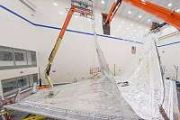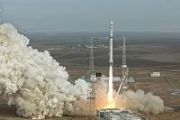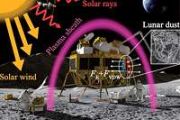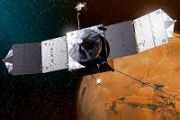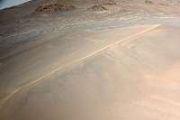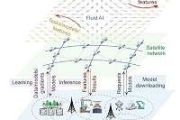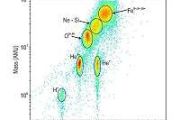
Copernical Team
Hughes launches new HughesNet plans for small businesses
 Hughes Network Systems has announced new HughesNet plans for small businesses in the U.S. The new satellite internet service plans include features like business-grade support, express repair and free installation to support the needs of small businesses for network availability and high performance.
The plans also include low-latency HughesNet Fusion plans that seamlessly blend Geostation
Hughes Network Systems has announced new HughesNet plans for small businesses in the U.S. The new satellite internet service plans include features like business-grade support, express repair and free installation to support the needs of small businesses for network availability and high performance.
The plans also include low-latency HughesNet Fusion plans that seamlessly blend Geostation Deep-learning system explores materials' interiors from the outside
 Maybe you can't tell a book from its cover, but according to researchers at MIT you may now be able to do the equivalent for materials of all sorts, from an airplane part to a medical implant. Their new approach allows engineers to figure out what's going on inside simply by observing properties of the material's surface.
The team used a type of machine learning known as deep learning to c
Maybe you can't tell a book from its cover, but according to researchers at MIT you may now be able to do the equivalent for materials of all sorts, from an airplane part to a medical implant. Their new approach allows engineers to figure out what's going on inside simply by observing properties of the material's surface.
The team used a type of machine learning known as deep learning to c NASA awards contracts for NOAA Coronagraph Instrument Phase A Study
 NASA, on behalf of the National Oceanic and Atmospheric Administration (NOAA), has selected five firms for the Space Weather Next Lagrange 1 Series (L1 Series) Coronagraph (COR) Phase A Study. These contracted firms will provide services to help meet the objectives of NOAA's L1 Next Series.
The firms selected are Johns Hopkins Applied Physics Lab (APL), Laurel, Maryland; EO Vista, Acton, M
NASA, on behalf of the National Oceanic and Atmospheric Administration (NOAA), has selected five firms for the Space Weather Next Lagrange 1 Series (L1 Series) Coronagraph (COR) Phase A Study. These contracted firms will provide services to help meet the objectives of NOAA's L1 Next Series.
The firms selected are Johns Hopkins Applied Physics Lab (APL), Laurel, Maryland; EO Vista, Acton, M ESA recruiting for key divisional directors
 The European Space Agency is currently looking for a new Director of Connectivity and Secure Communications and new Director of Internal Services to join its executive board and support the Director General, with responsibility for relevant ESA activities and overall objectives.
b>Director of Connectivity and Secure Communications br> /b>
As Director of Connectivity and Secure Communicat
The European Space Agency is currently looking for a new Director of Connectivity and Secure Communications and new Director of Internal Services to join its executive board and support the Director General, with responsibility for relevant ESA activities and overall objectives.
b>Director of Connectivity and Secure Communications br> /b>
As Director of Connectivity and Secure Communicat SmartSat sends stellar PhD students to NASA JPL for career-boosting internships
 SmartSat Cooperative Research Centre (CRC), Australia's leading space research centre, has announced a prestigious program to fund two PhD students to undertake an intensive ten-week internship at NASA's Jet Propulsion Laboratory (JPL) in California, USA.
Aspiring space leaders Anne Bettens, from the University of Sydney, and Emily Ahern, from the University of Adelaide, have been paired w
SmartSat Cooperative Research Centre (CRC), Australia's leading space research centre, has announced a prestigious program to fund two PhD students to undertake an intensive ten-week internship at NASA's Jet Propulsion Laboratory (JPL) in California, USA.
Aspiring space leaders Anne Bettens, from the University of Sydney, and Emily Ahern, from the University of Adelaide, have been paired w NASA selects Emily Nelson as Chief Flight Director
 NASA has named Emily Nelson its new chief flight director, leading the group that directs human spaceflight missions from the Mission Control Center at the agency's Johnson Space Center in Houston.
Norm Knight, the agency's director of flight operations, selected Nelson to replace Holly Ridings, who held the position from 2018 to 2022, and now helps lead the agency's Gateway Program, an in
NASA has named Emily Nelson its new chief flight director, leading the group that directs human spaceflight missions from the Mission Control Center at the agency's Johnson Space Center in Houston.
Norm Knight, the agency's director of flight operations, selected Nelson to replace Holly Ridings, who held the position from 2018 to 2022, and now helps lead the agency's Gateway Program, an in Alberta researcher to help select samples to bring back from Mars
 A University of Alberta researcher is among a group of scientists choosing which samples NASA's rover Perseverance will gather on Mars to bring back for analysis on Earth.
For this mission, "return sample scientist" Chris Herd, a professor in the Department of Earth and Atmospheric Sciences and curator of the U of A's Meteorite Collection, will help determine which samples could answer the
A University of Alberta researcher is among a group of scientists choosing which samples NASA's rover Perseverance will gather on Mars to bring back for analysis on Earth.
For this mission, "return sample scientist" Chris Herd, a professor in the Department of Earth and Atmospheric Sciences and curator of the U of A's Meteorite Collection, will help determine which samples could answer the Sidus Space and Lulav Space team up for navigation and control of lunar spacecraft
 Sidus Space, Inc. (NASDAQ:SIDU), a Space and Defense-as-a-Service satellite company focused on mission-critical hardware manufacturing; multi-disciplinary engineering services; satellite design, production, launch planning, mission operations; and in-orbit support, is pleased to announce it has signed a memorandum of understanding with Lulav Space, an Israeli robotics company specializing in spa
Sidus Space, Inc. (NASDAQ:SIDU), a Space and Defense-as-a-Service satellite company focused on mission-critical hardware manufacturing; multi-disciplinary engineering services; satellite design, production, launch planning, mission operations; and in-orbit support, is pleased to announce it has signed a memorandum of understanding with Lulav Space, an Israeli robotics company specializing in spa Examining a Potential Drill Spot: Sols 3817-3818
 Our weekend drive got us into a good position to attempt to examine a block we might attempt to drill. We don't dive right in; we have to make sure this is in fact where we want to drill. This means contact science on "Ubajara," which you can see on the left of the image above. The GEO team spent some time picking a special target name, which involved looking at pictures of national parks. Ubaja
Our weekend drive got us into a good position to attempt to examine a block we might attempt to drill. We don't dive right in; we have to make sure this is in fact where we want to drill. This means contact science on "Ubajara," which you can see on the left of the image above. The GEO team spent some time picking a special target name, which involved looking at pictures of national parks. Ubaja A stormy, active sun may have kickstarted life on Earth
 The first building blocks of life on Earth may have formed thanks to eruptions from our Sun, a new study finds.
A series of chemical experiments show how solar particles, colliding with gases in Earth's early atmosphere, can form amino acids and carboxylic acids, the basic building blocks of proteins and organic life. The findings were published in the journal Life.
To understand the
The first building blocks of life on Earth may have formed thanks to eruptions from our Sun, a new study finds.
A series of chemical experiments show how solar particles, colliding with gases in Earth's early atmosphere, can form amino acids and carboxylic acids, the basic building blocks of proteins and organic life. The findings were published in the journal Life.
To understand the 





